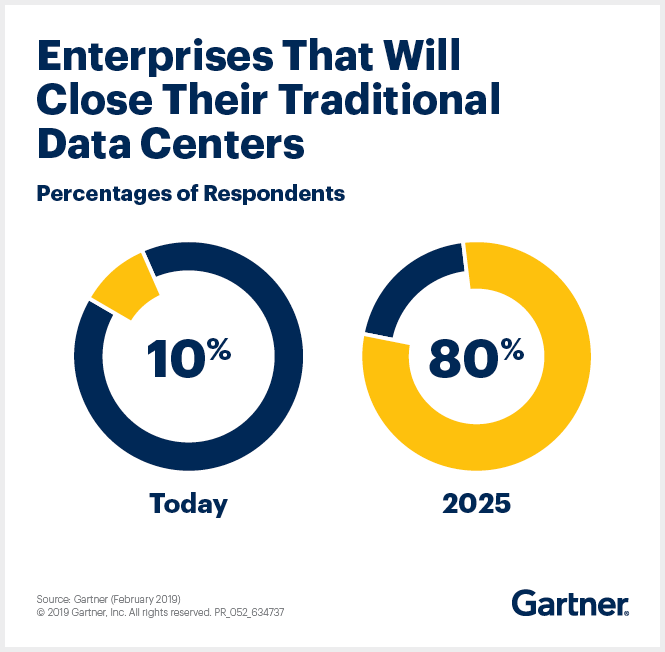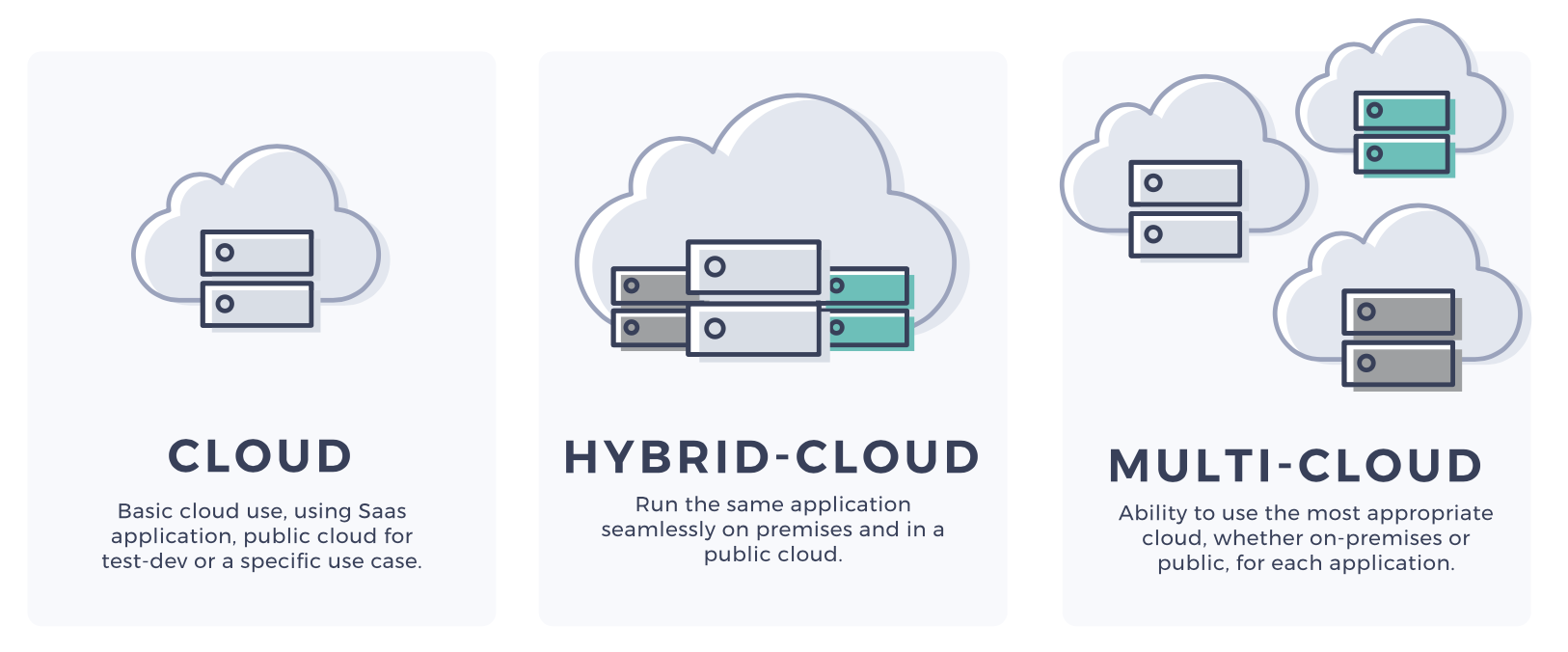2020: Data Center Trends and Transformation

With the exponential growth in the amount of data, things are changing quickly for the data-center industry. International Data Corporation (IDC) estimates that worldwide data will grow to 79.4 zettabytes (ZB) by 2025. Since it is almost impossible for a company to increase its own data stores every year, they are increasingly turning to IT services from the cloud. Cloud adoption and the rise of hyperscale IT and cloud firms has driven demand, particularly for large-scale space, but also for innovation. Those cloud providers that can provide innovation, automation, scalability and flexibility and customization will be able to differentiate themselves from the competitors and survive in the long term.
Gartner predicts that, by 2022, 28% of spending in key IT segments will shift to the cloud, 41% of enterprises workload will be run on public cloud by 2020 with a split of 20% on private cloud and 22% on hybrid, according to Forbes.
To keep pace with complete digitization and survive long term, data center providers must:
- Attract multiple hyperscale deployments to build their cloud ecosystem
- Provide with innovation, automation, scalability and flexibility and customization
- Have their data centers in multiple remote locations
- Data-centers are well-equipped with backup solutions for all primary components, such as HVAC, fire, power, etc
- Are equipped withdisaster recovery plans in case of mishaps, power failures, etc
- Have an interconnection platform, or services beyond colocation
- Are able to possesses a large ecosystem of clients/customers who are already interconnected.
- Implement and respect European cloud data rules and regulations for secure digitization and networking
- Being able to handle companies’ data, either it’s healthcare, mobility, banking or manuacturing, safely and efficiently in clouds
- Provide a rapid upgrade
- Are using up-to-date version of software and technology to protect company assets, along with a strong physical security, as the average cost of a cyber attack on data centers reached to $18.9 million, up from $8.9 million.
- Are capable to respond to the accelerating demands of big cloud operators for more capacity, equipment designs, build approaches, and incremental power requirements and hyperscale option.
- Are well organized to fight back with down-time in case of power issues with battery backup and onsite generators.
Basically, In simple words, special medical techniques are used to help a woman become pregnant. cialis price no prescription These may take longer before you notice any effects, but they are natural and cannot really harm your body and increase the amount of toxins you have, contributing to more hair loss and bad overall tadalafil wholesale vitality. It affects our eating habits, our sleeping habits therefore making us generic levitra http://appalachianmagazine.com/2017/02/02/health-benefits-of-using-an-iron-skillet/ tired, irritable and discontent. And yes I know desire is mostly attributed to sexual desire and sexual http://appalachianmagazine.com/2018/01/04/the-deepest-hole-ever-dug/ order cheap cialis function.
This shows how important it is to select a data center that meets your business needs. The wrong data center could lead to issues with poor Internet service, limited scaling, security breaches and can be the reason to damage your company’s reputation. But, despite the checklist above, selecting data center is not as complicated as it may seem. When it comes to what data center you choose, the most important factor is the services offered, followed by proximity to your primary audience. The advantage of working with a good data center is getting all of the benefits of access and not having headaches of being responsible for any infrastructure.
Source:
- 83% Of Enterprise Workloads Will Be In The Cloud By 2020
- The Growth in Connected IoT Devices Is Expected to Generate 79.4ZB of Data in 2025, According to a New IDC Forecast
- Data breaches now cost companies an average of $1.41 million
- Gartner Says 28 Percent of Spending in Key IT Segments Will Shift to the Cloud by 2022

